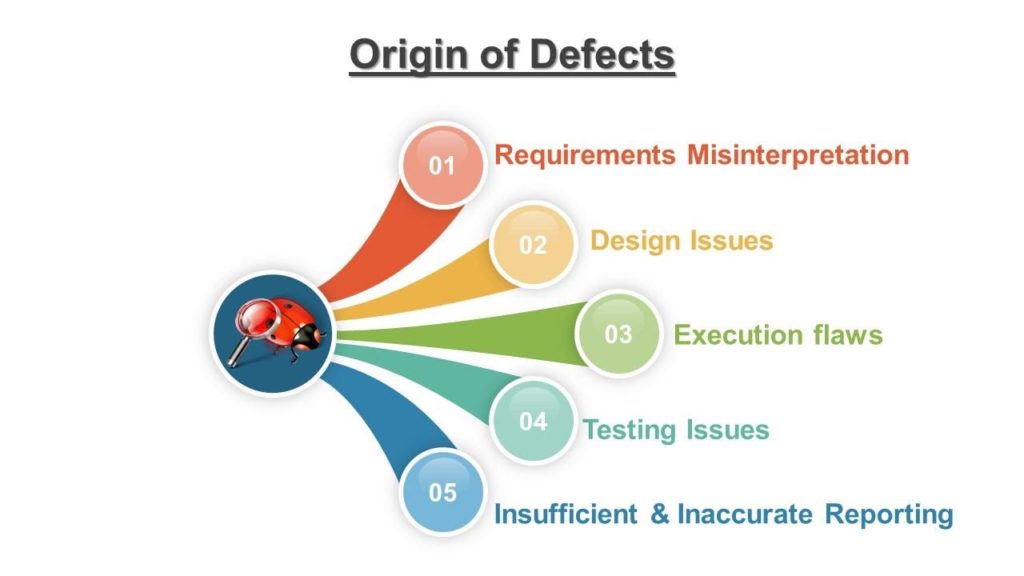Accelerate Success with AI-Powered Test Automation – Smarter, Faster, Flawless
Start free trialOver the years, software development and testing have undergone several stages of evolution. Every new era dawned with new hopes, but at the same time was dotted with new challenges. However, one thing that has remained constant – the software defects. Be it a small-scale project or a colossal application, defects are everyone’s nightmare.
A software defect is an error, flaw, or fault in a computer program or system that causes it to produce an incorrect or unexpected result, or to behave in unintended ways — Wikipedia.
An efficient defect management ecosystem, with an effective defect prevention process, pre-testing defect removal, intensive software testing can significantly bring down the overall development costs and can also save a lot of time.
Ward Cunningham coined the term “technical debt”, which essentially refers to the increasing cost for defect removal accrued over a period of time, due to oversights during the design and development process. The overall cost of identifying and rectifying defects down the line can grow exponentially if the loopholes in the process of software development are not plugged.
What is The Main Origin of Defects?
Debugging is a painful exercise, therefore identifying the origin of the software defects is extremely important in order to take timely corrective measures. The rate at which the new features and modifications are introduced, it becomes even more important to ensure that the builds are defect-free before any new changes are incorporated.
Traditionally, the focus has been more on code defects, but the fact is that the defects can originate as early as requirements gathering/analysis, and can be introduced at the time of software design too. If the base is defective, how can an end product be of high quality? The worst is to realize this much later and then start firefighting, which obviously is an expensive exercise.
In this article, we will explore the possible origins of defects and how we can help you in handling them.

Requirements Misinterpretation

Understanding customer needs and translating them to technical requirements lays the foundation of an application. If done incorrectly, the resulting design will be faulty. The code may be defect-free, but it was built on the wrong premise. Hence, it is a good idea to introduce thorough requirement-related reviews to nip any potential defect at the onset only.
Requirement understanding and misinterpretation can be due to either poor communication between the teams and clients or due to immature requirement gathering processes.

Design Issues

There are times when software architects end up translating the functional requirements to design specifications incorrectly, thus introducing a defect inadvertently. Besides, a poor design with not enough focus on basic software architecture, inaccurate concepts, database efficiency, leads to various issues, which further result in multiple defects at different points of time. Also, testers may not take into account all the possibilities and design not enough test cases, or they may misunderstand the functionality and prepare a faulty test plan. Hence, it is important to have an inclusive approach and ensure that both, the developers and the testers, are a part of the requirement understanding and designing process.
Execution Flaws

Translation of design to a working code gets the maximum scrutiny when it comes to looking for defects. There is nothing called flawless development. It is marred with several coding issues like,
- Using outdated legacy plugins/libraries
- Using an untested set of code
- Bad fixes for previously detected defects, inadvertently introducing other issues
- Not adhering to standards
All these coding issues are breeding grounds for long-term issues.
Testing Flaws
Software testing itself can have multiple issues, either due to an oversight or lack of understanding. These issues can further introduce defects, which may prove expensive. Some of them are listed below.
- Missing tests for a functionality
- Not all aspects of testing are covered for a particular functionality
- False failures
- Incorrectly designed test cases
Reporting Issues

What end purpose will testing serve if the reporting is not done correctly and efficiently?
Outdated reports and lack of information sharing are the bane of the software testing process. Following are few areas of concern during test results reporting.
- Reports are not updated after every test cycle
- The defect is recorded incorrectly
- Incorrect reporting and sharing of test results
- Inefficient defect triaging
How We can Help ?
Webomates provides services to address all the above concerns.
Once a defect is found, our Test Package Analyzer identifies all the impacted test cases, traces them to impacted user stories/epics/requirements. Thus, giving you the exact origin of the defect encountered.
Webomates’ Intelligent Analytics improvises your testing process by providing a feedback loop of defects to requirements. It also keeps an eye on the results of exploratory testing and intelligently handles the results. If a module gets a high number of defects during exploratory testing, then it clearly needs to be re-examined and more test cases need to be generated for the same.
Leave your defect reporting worries to us. We would not let you work on any outdated Defect Report. Webomates CQ provides a comprehensive report with properly triaged defects. The QA and development team can access these reports, thereby allowing them to intervene and take appropriate action.
Webomates CQ helps organizations in bridging the gap between the dream and reality of effective testing.If this has piqued your interest and you want to know more, then please click here and schedule a demo, or reach out to us at info@webomates.com. If you liked this blog, then please like/follow us Webomates or Aseem.
Read Next –
Test Automation vs Manual Testing
Exploratory testing in software testing
Requirements traceability matrix
Intelligent automation testing
Tags: continuous testing, DefectTriage, IntelligentAnalytics, Regression Testing

Leave a Reply